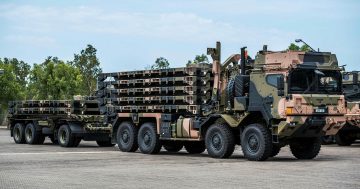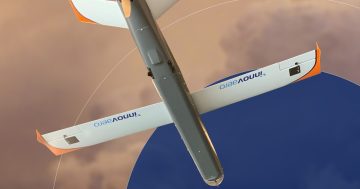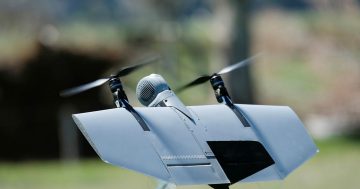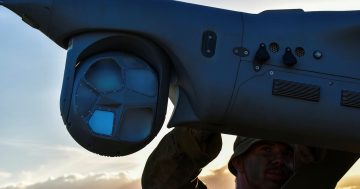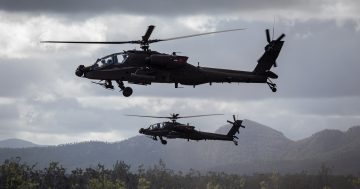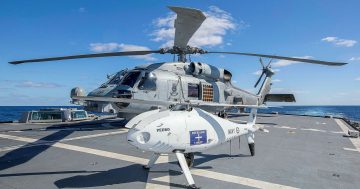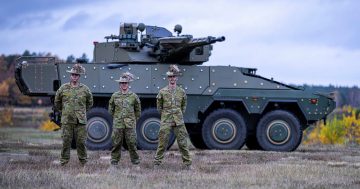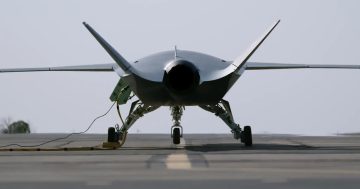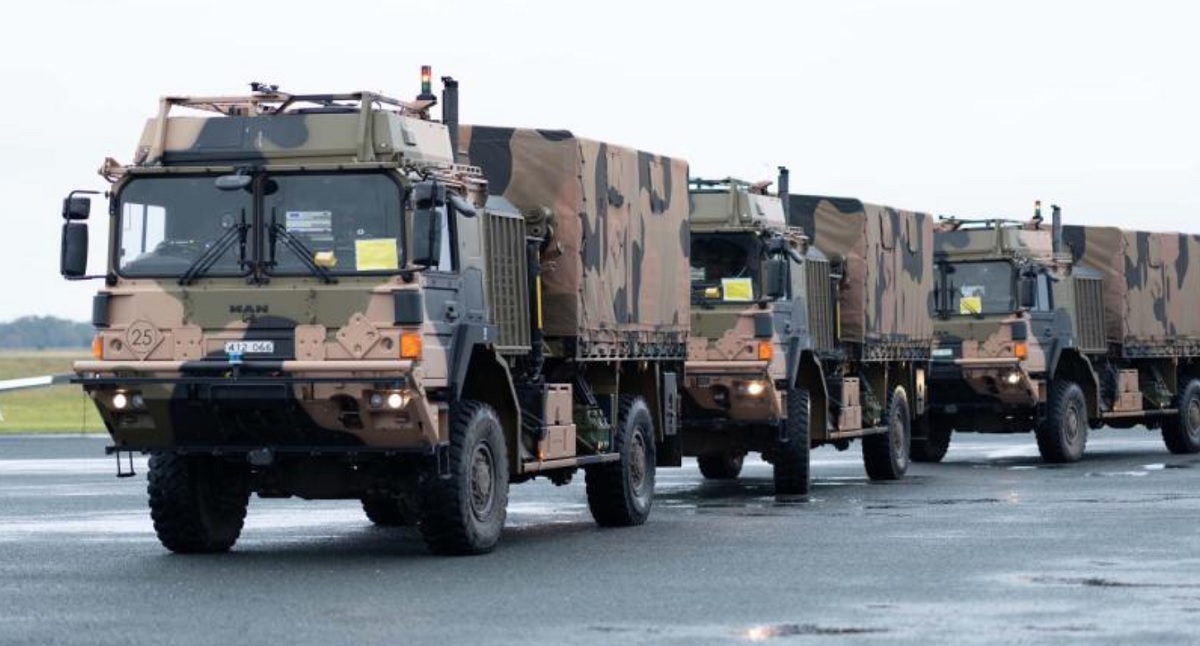
Three Army HX series trucks prepare to embark on the autonomous convoy. Photo: ADF.
The Australian Army has successfully carried out a trial where large trucks were fitted with autonomous systems and driven in a convoy on Victorian rural roads.
Conducted in conjunction with the National Transport Research Organisation and Deakin University, the trial saw three of the Army’s Rheinmetall HX-series trucks fitted with autonomous systems. The trial is part of the Army’s modernisation programs also exploring human machine teaming, quantum technology, artificial intelligence and electrification.
The autonomous trucks – with crews aboard in case of malfunction – successfully conducted a follow-the-leader trial behind a crewed truck on a simulated autonomous resupply mission between Mangalore Airfield and Puckapunyal Army Base near Seymour using the Goulburn Valley Highway and Hume Highway.
“This trial showed how a convoy could undertake a resupply mission between an airfield and a military base, giving us an idea of how this kind of technology could be used in the future,” Colonel Robin Smith from Army’s Future Land Warfare Branch said in a 9 June release.

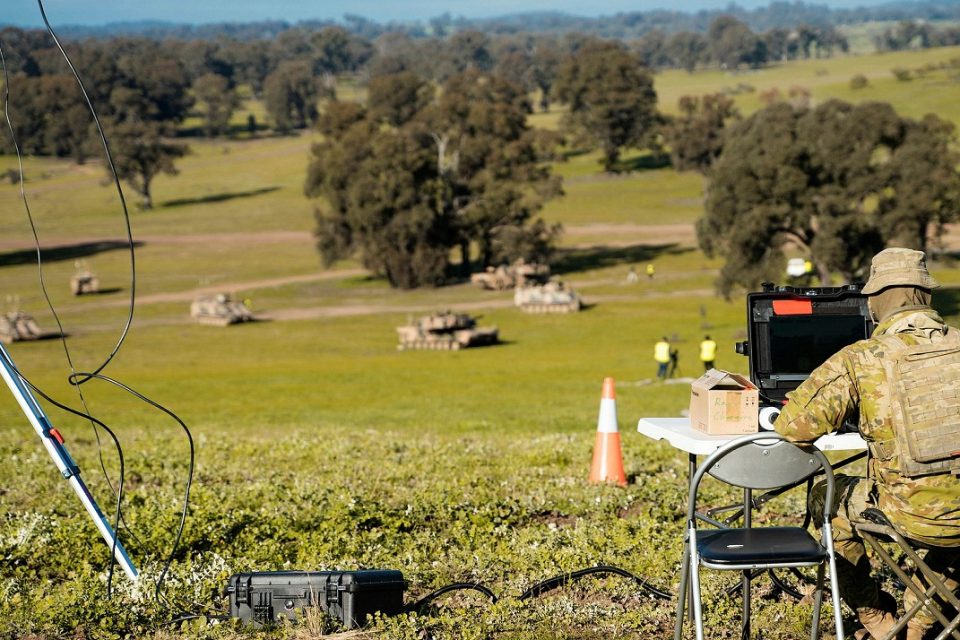
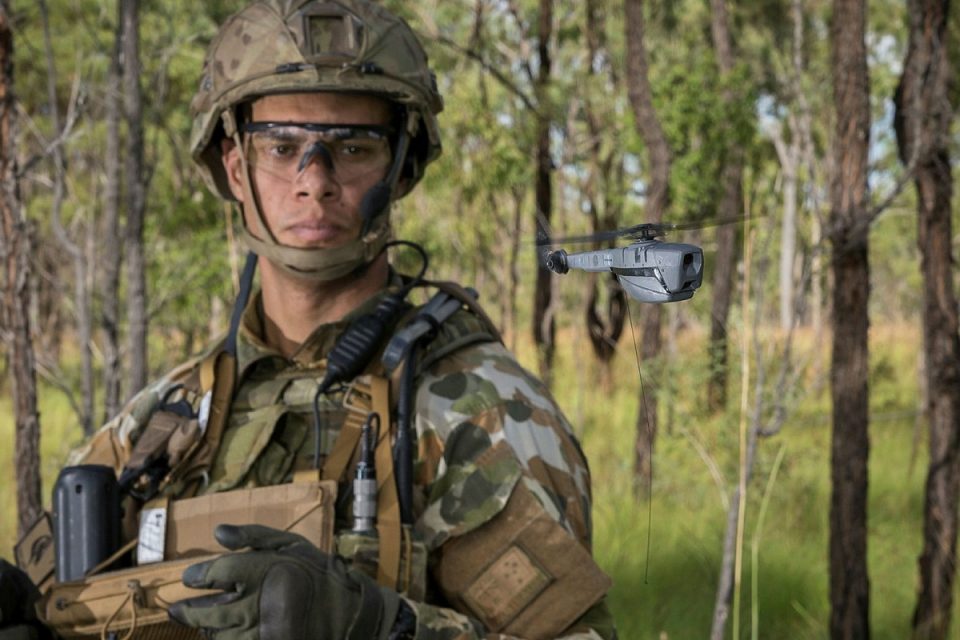
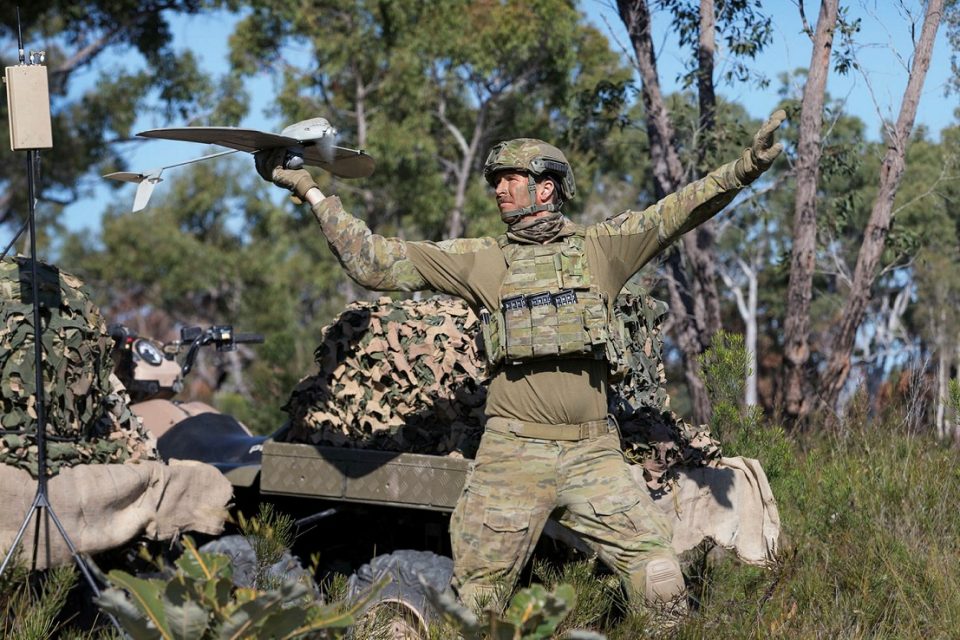



“Driving on a highway in traffic meant the technology was tested to stop safely, and leave distances between other vehicles, while following the path set by the leader.
“Down the track, technology like this could remove our soldiers from dangerous environments, or help free soldiers up for other roles.”
The trial isn’t the first autonomous vehicle trial conducted by the Army. In 2019, it was announced that M113AS4 armoured personnel carriers (APC) would be converted with autonomous systems by BAE Systems Australia in conjunction with the Defence Cooperative Research Centre (CRC) so they could be trialled in an optionally manned configuration.
Dubbed optionally crewed combat vehicles (OCCV), 20 M113AS4s have been modified to date with the aim to conduct experiments to better understand opportunities to employ autonomous vehicles on the battlefield. The Army says vehicles such as these can be used for intelligence gathering, as an ambulance, or for logistics support.
The Army possesses a substantial fleet of M113 APCs. It took delivery of more than 700 of them from 1965, with many serving in Vietnam, Somalia, Rwanda and Timor Leste. In the late 1990s and early 2000s, 431 M113s were upgraded to the AS4 standard with a stretched chassis with a revised interior layout, electrically powered turret, day/night weapon sights, a new engine and drive train, steering controls, and electrical and fuel systems.
The OCCVs have since been successfully tested in various exercises, including the live-fire Exercise Koolendong 2021 in the Northern Territory which tested their ability to operate in a harsh environment.
The Royal Australian Air Force doesn’t have exclusive rights to uncrewed operations in the air, with the Army also operating several operational tactical uncrewed systems.
The smallest of these is the Black Hornet nano UAS, a palm-sized drone which has a range of several kilometres and can fly almost silently to provide intelligence, surveillance and reconnaissance (ISR) for ground forces. Several Black Hornets can be carried in a shoebox-sized hangar with rechargers, or individually in a charger case on a soldier’s hip or wrist.
Next up is the Wasp AE, a winged drone which is hand launched and can fly for several hours to provide high-definition imagery of an area of interest. The Wasp will soon be replaced by a new drone under the Project LAND 129 Phase 4B small uncrewed aerial system (SUAS) requirement.
Then there’s the AAI Shadow 200, a wheeled drone with a wingspan of nearly four metres that is launched from a trailer-mounted catapult, and lands conventionally with the aid of a cable arrestor system. The Shadow was rapidly acquired for reconnaissance operations in Afghanistan, and will soon be replaced by the Insitu Integrator UAS under the LAND 129 Phase 3 Tactical Uncrewed Aerial System (TUAS) project.
The Integrator is also launched from a catapult, and is recovered through a novel ‘skyhook’, a rope suspended from a small crane. After training for its new operators from the 132nd Battery of Army’s 20th Surveillance and Target Acquisition Regiment, the Integrator conducted its first flight with the Army during Exercise Falcon Crawl at Shoalwater Bay near Rockhampton in May 2023.
Other uncrewed systems operated by Army include a number of commercially available aerial drones used for training and non-combat roles, and small ground vehicles used for bomb disposal, anti-mine operations, or suspicious item inspection.
Original Article published by Andrew McLaughlin on Riotact.


